Can`t believe that BOKEH is not understood
Oct 9, 2015 10:04:12 #
Mike629 wrote:
Please read and pay attention to the response by GoofyNewfie. This is almost exactly how it was explained to me many years ago. Oh, and don't put too much emphasis on it. It is either going to be there or it is not. Not a big deal.it is the blur created by the lens & DOF, it`s not that hard to understand.
Oct 9, 2015 10:46:46 #
Mike629 wrote:
it is the blur created by the lens & DOF, it`s not that hard to understand.
Actually it's the QUALITY of the blur, not the blur itself.
Oct 9, 2015 11:49:28 #
Mike629 wrote:
it is the blur created by the lens & DOF, it`s not that hard to understand.
So, yeah, we do not understand what is bokeh.
By the way, (something I forgot to mention) 'good bokeh' is not dependent on the DOF but by the plan of focus and determined by the lens aperture, the lens blades number and the strength of the background light.
So YOU do not understand what bokeh is.
Oct 9, 2015 12:59:07 #
Mike629 wrote:
it is the blur created by the lens & DOF, it`s not that hard to understand.
That's why I hate the word bokeh, too many people misuse it because they think it means the blur itself.
Oct 9, 2015 13:04:56 #
Mike629
Loc: NJ,United States
Mike629 wrote:
Guess I `ve got a lot to learn, more tricky than I thought. Here are examples of what I have believed to be bokeh.it is the blur created by the lens & DOF, it`s not that hard to understand.
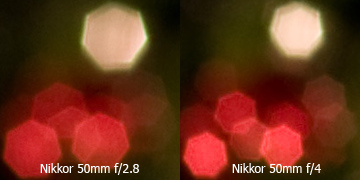
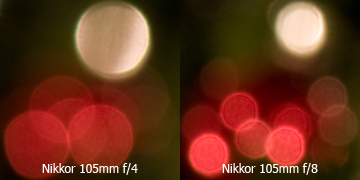
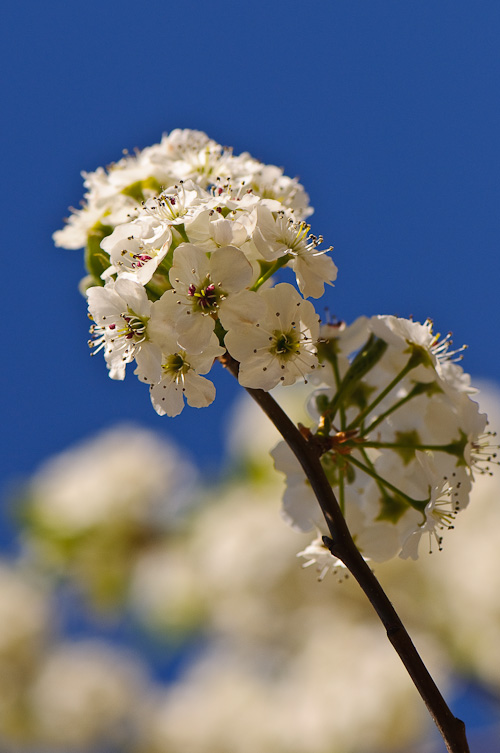

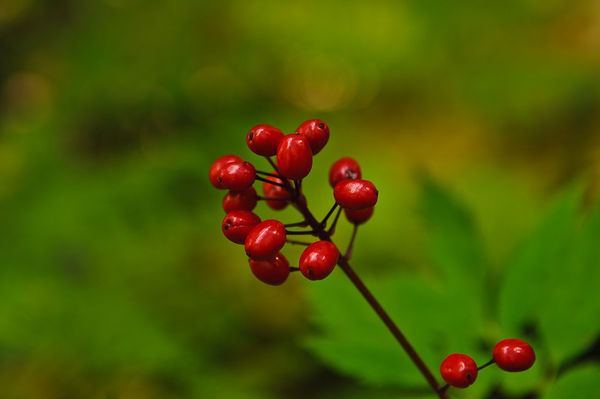
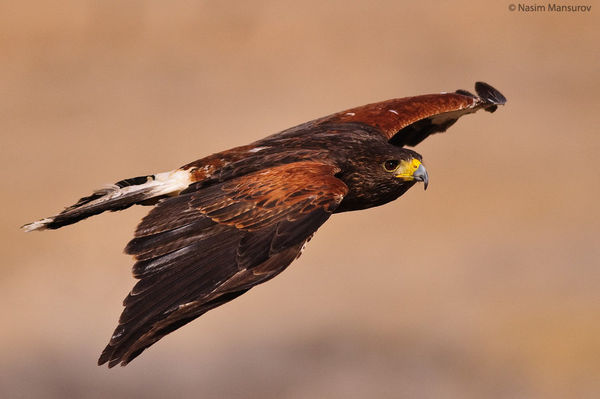
Oct 9, 2015 13:30:19 #
amfoto1
Loc: San Jose, Calif. USA
Jim Bob wrote:
Oh really? Please enlighten me and Ken Rockwell while you're at it.
Like so many things he writes about, Ken Rockwell is pretty far off-base about "bokeh".
"Bokeh" is highly subjective. It cannot be precisely defined, the way Rockwell tries to do. What he holds up as "good" and "bad" examples are very simplistic, merely his opinion and demonstrate his personal preferences.
Bokeh also can be specific to a particular image. The same viewer might think that what looks "right" in one image looks "awful" in another... and vice versa. It's not as simple as "good bokeh" vs "bad bokeh". An image might be described as having "coarse bokeh", "soft bokeh", "creamy bokeh", "crisp bokeh" or "busy bokeh"... and many more. Any of these could make or break a particular image... Any of them might enhance an image... or detract from it. It depends upon the subject, how the photographer chooses to render it.... and the viewer's personal opinions about the result.
Rather than accept someone else's opinion about what's good and bad, the best thing to do is study and learn how your particular lens renders an image.... Both the in-focus and out-of-focus areas, and the transition areas in-between (as well as its other characteristics).... then experiment with it and explore ways to utilize that "look" in your images.
For example, some people love the way certain old Soviet lenses render out-of-focus areas of an image and seek out these lenses... Other folks find it busy and ugly, hate their bokeh and avoid those lenses. Also consider pinhole cameras, Dianas and lomography, Lens Babies, etc. The images made with them are celebrated for their flaws. A friend's favorite lens is a 95-year-old uncoated Kodak that would be described as having all sorts of optical failings, if we tried to apply modern definitions to it. He uses it with an 8x10 view camera to make incredibly beautiful black & white, still life images that are printed very large with a massive horizontal enlarger and chemical darkroom.
Wikipedia's definition of bokeh is okay... better than Ken Rockwell's. It still falls short, IMO... but makes some good points and has some good illustrations: https://en.wikipedia.org/wiki/Bokeh
Oct 9, 2015 13:37:01 #
Good Bokeh also depends on the shapes of the forms in the background that are being blurred...you can have a "good" bluring effect from the lens, but because of bad shapes in the background not get something good. I have seen the "good" bokeh with perfect circles behind a face but is dependent on light sources that are "points" of light tone. I have tried it and gotten nice smooth good bokeh but because of the irregular shapes of the particular background light (toned) sources, (and shadows) I got a not so good image in the end. So if you are getting picky about good and bad bokeh you would also have to say that good bokeh does not a good picture make!
Rongnongno wrote:
So, yeah, we do not understand what is bokeh.
By the way, (something I forgot to mention) 'good bokeh' is not dependent on the DOF but by the plan of focus and determined by the lens aperture, the lens blades number and the strength of the background light.
So YOU do not understand what bokeh is.
By the way, (something I forgot to mention) 'good bokeh' is not dependent on the DOF but by the plan of focus and determined by the lens aperture, the lens blades number and the strength of the background light.
So YOU do not understand what bokeh is.
Oct 9, 2015 13:50:18 #
Mike629
Loc: NJ,United States
amfoto1 wrote:
Thanks for posting this, really.Like so many things he writes about, Ken Rockwell ... (show quote)
Oct 9, 2015 13:54:47 #
mwsilvers
Loc: Central New Jersey
SharpShooter wrote:
NO, it's the quality of the blur created by that lens, not the blur!
Bad blur, NO Bokeh!!!! ;-)
So apparently, not so easy!! :lol:
SS
Bad blur, NO Bokeh!!!! ;-)
So apparently, not so easy!! :lol:
SS
:thumbup:
Oct 9, 2015 14:12:51 #
Mike629 wrote:
Cool! you are learning, that's for sure. The bottom two Nikon photos show bokah. The photos of the white blooms is just a blurred background; no bokah. The bird in the tree definitely has the bokah effect. The berry picture has some slight bokah. The flying bird has no bokah. Like I said, bokah is overrated. If it is there, it's there; if it is not, it's not. What is important is what you are trying to achieve with your DOF. The bokah, if any, would be secondary. I hope this helps.Guess I `ve got a lot to learn, more tricky than I thought. Here are examples of what I have believed to be bokeh.
Oct 9, 2015 14:16:38 #
Leitz
Loc: Solms
Mike629 wrote:
it is the blur created by the lens & DOF, it`s not that hard to understand.
Can`t believe that BOKEH is not understood? If you have read the replies, you should believe it now! :lol: :lol:
Oct 9, 2015 14:39:12 #
someone should post a pic they have that has good bokeh. THAT is the way you can describe it.
Oct 9, 2015 15:04:24 #
Oct 9, 2015 15:21:28 #
tainkc wrote:
Cool! you are learning, that's for sure. The bottom two Nikon photos show bokah.
All of those images, and specifically including the four Nikkor images, show bokeh. Any image that has any amount of blur necessarily can have the blur qualitifed. It might be course, it might be smooth, it might be nice it might not be nice. But since the blur exists it has to have a "quality". That quality is called bokeh.
Terms like course, harsh, smooth and creamy stand on their own. Terms like good or bad are relative. A type of bokeh that is very "bad" in one image might be very "good" in another. The classic example is the blur character of a mirror lens, which generally produces a less than attractive result, that can in some images be just exceedingly attractive. Same character... with a different subject.
tainkc wrote:
The photos of the white blooms is just a blurred background; no bokah.
Because the background is blurred, the image has bokeh. That blur can be described as smooth, and possibly even creamy. Nice bokeh.
tainkc wrote:
The bird in the tree definitely has the bokah effect.
Not much different than in the image of the white blooms. Same effect, same bokeh. Might even be the same lens!
tainkc wrote:
The berry picture has some slight bokah.
The bokeh in that image looks just slightly harsher than the two above it. Close enough that it also might actually be the same lens, but I suspect it isn't.
tainkc wrote:
The flying bird has no bokah.
Very smooth bokeh.
tainkc wrote:
Like I said, bokah is overrated. If it is there, it's there; if it is not, it's not.
Well, if you don't have any idea what it is, I suppose that is overrated. Bokeh is never an 'if it is not, it's not". Bokeh is the quality of any out of focus area. If there is anything in a photograph that is out of focus, then the photo has bokeh of some kind. It may amount to nothing of significance, but it exists.
tainkc wrote:
What is important is what you are trying to achieve with your DOF. The bokah, if any, would be secondary. I hope this helps.
A particular bokeh is almost always what DOF is meant to achieve. The bokeh is secondary only to perhaps the in focus area.
Oct 9, 2015 15:55:11 #
Apaflo wrote:
A plain (pardon the term) blurred background is not a type of bokeh. The blurred blooms, although round, do not constitute bokeh. Read carefully GoofyNewfie's dictionary explanation. The discussion we are having here is why I really do not like the term. It is so widely misused. My Japanese photographer friend even goes into more detail as to why the term should not even exist. But to hear him tell about it, would be a book in itself.A particular bokeh is almost always what DOF is meant to achieve. The bokeh is secondary only to perhaps the in focus area.
If you want to reply, then register here. Registration is free and your account is created instantly, so you can post right away.






